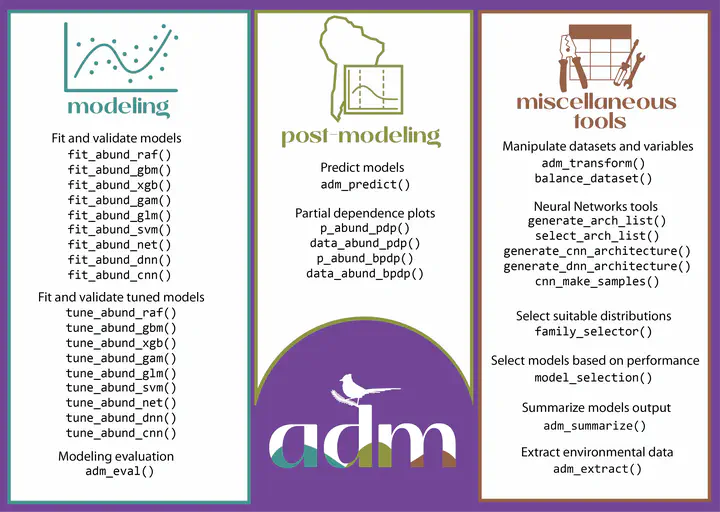
Abstract
AbstractAbundance-based species distribution models (ADM) correlate species abundance with environmental data to model and project abundance throughout space or time. This promising and still developing technique has gained significant attention in recent years.Here, we present the adm R package developed to support the construction of ADM, including data preparation, model fitting, prediction and model exploration. This package offers several modelling approaches (i.e. algorithms) that can be fine-tuned and customized. Models can be predicted in geographic space and explored regarding performance and response curves. Because modelling workflows in adm are constructed based on a combination of distinct functions and simple outputs, adm can be easily integrated into other packages. To illustrate this, we constructed a full modelling procedure for the shrub species Cynophalla retusa using adm.To date, adm provides 35 functions in three categories, (i) modelling: to tune, fit and validate models with nine different algorithms, with a suite of possible model-specific hyperparameters; (ii) post-modelling: to predict abundance across space and construct partial dependence plots to explore the relationships between abundance and environmental predictors; and (iii) miscellaneous tools: to support the workflow in all steps, including data handling, transformations and hyperparameter selection.With adm, we intend to provide a flexible, straightforward and concise toolbox for ADM construction and expect it to help users develop and leverage the promising ADM field.